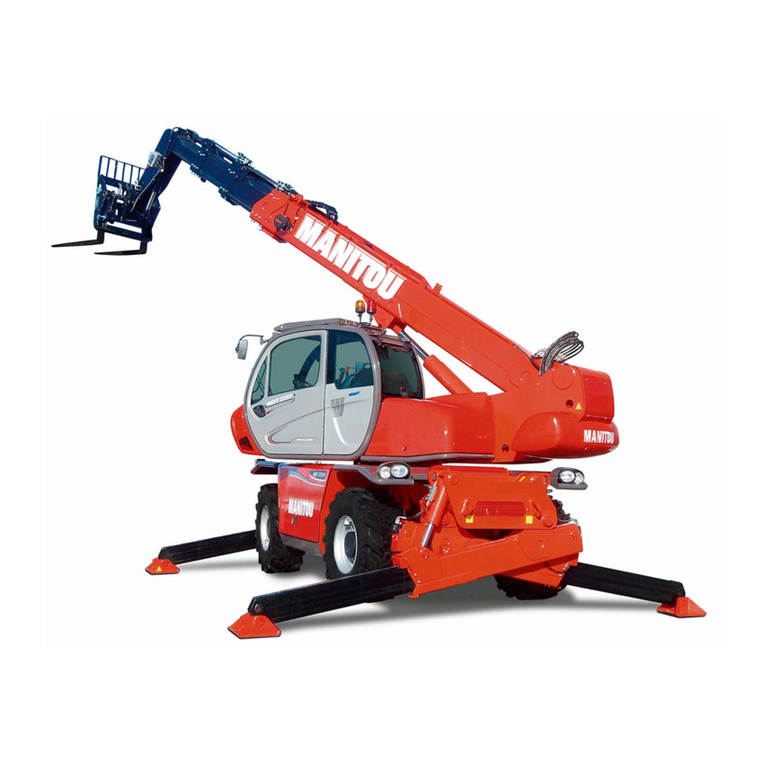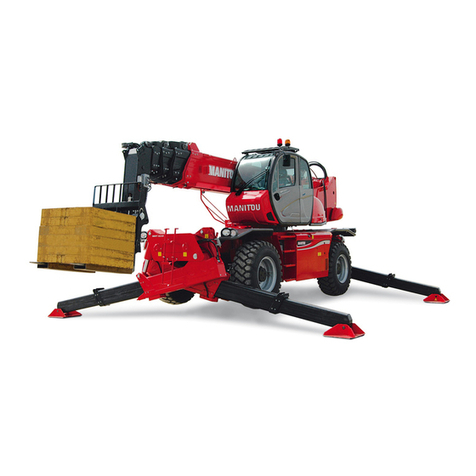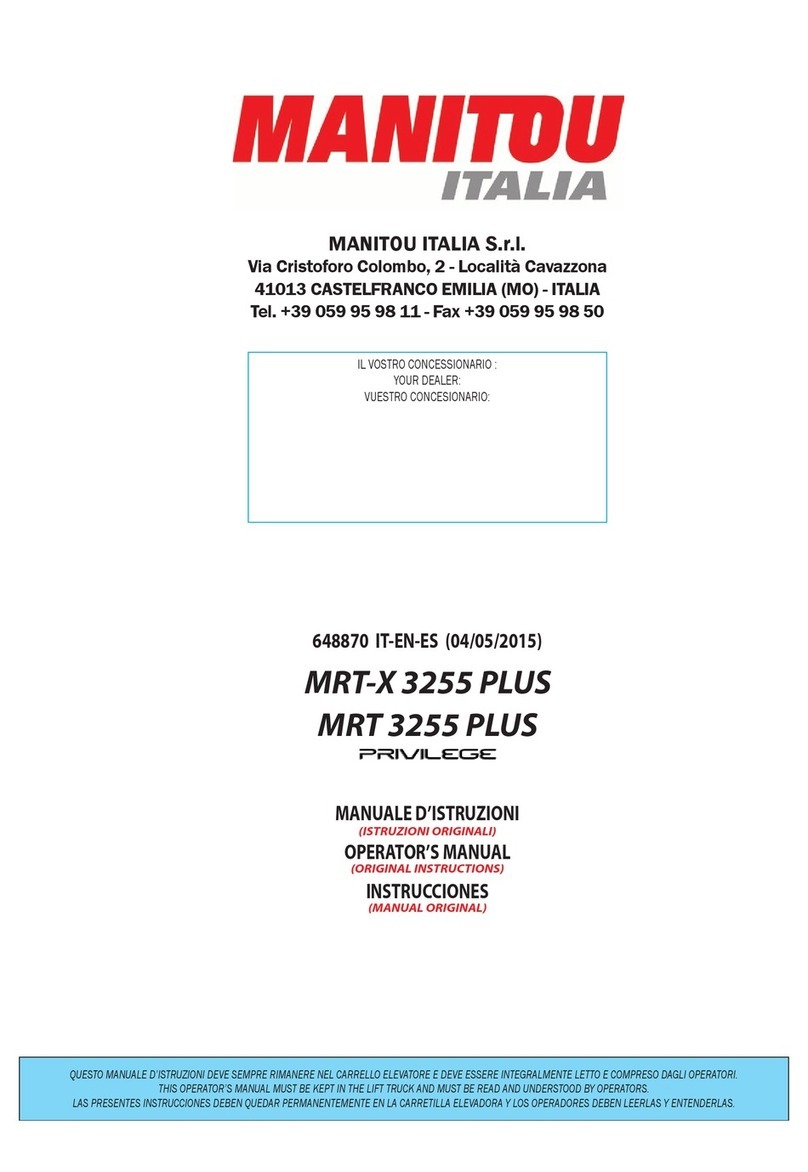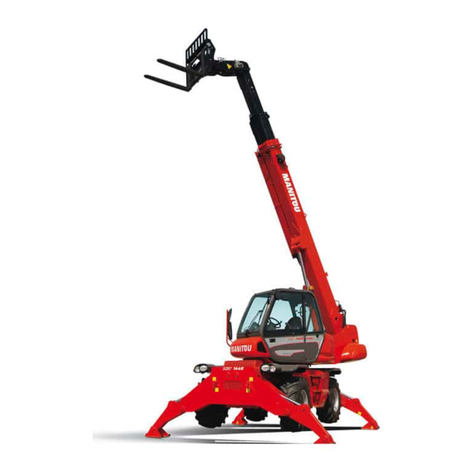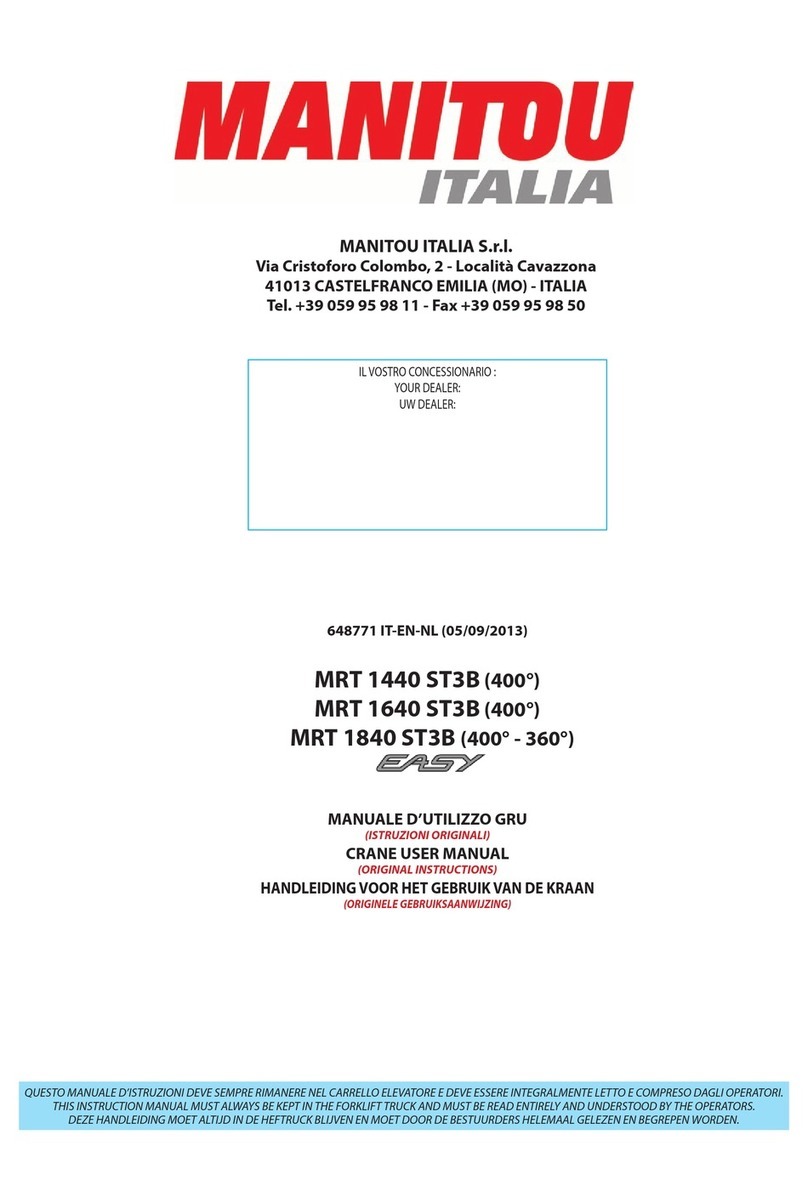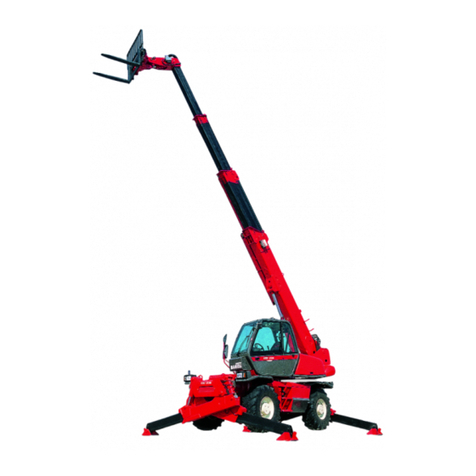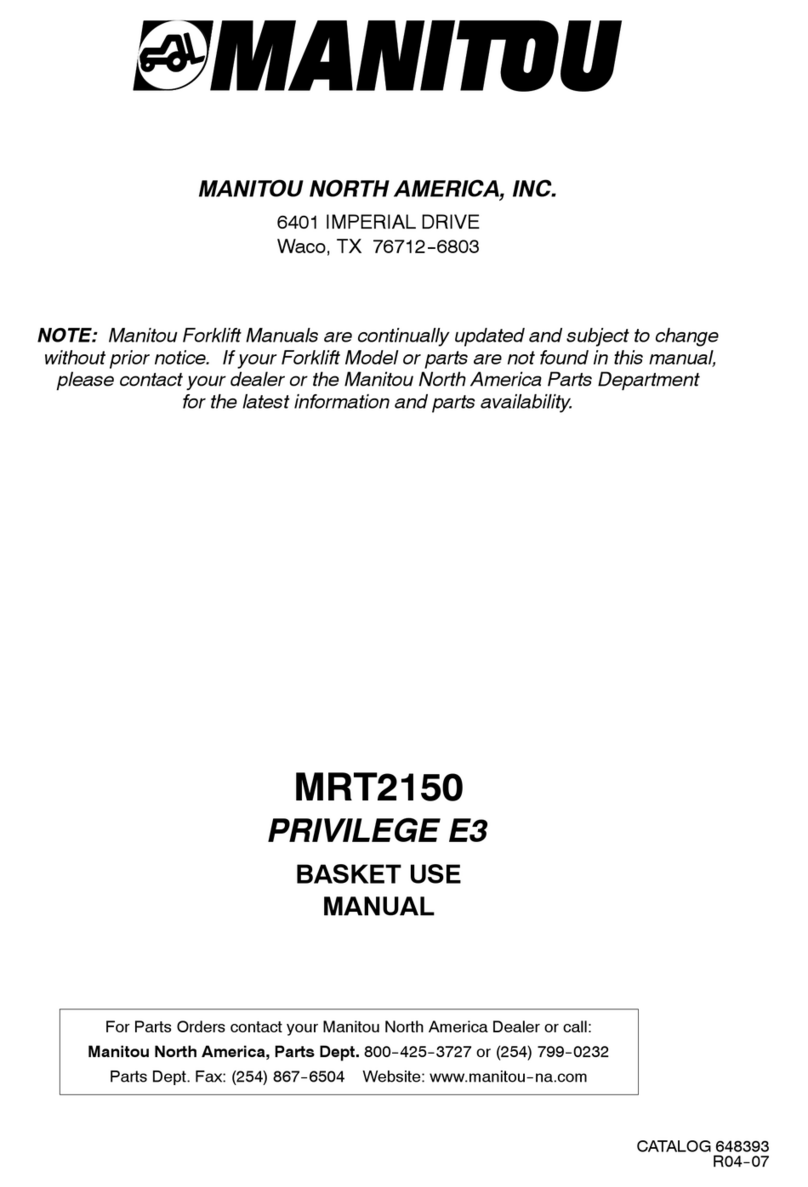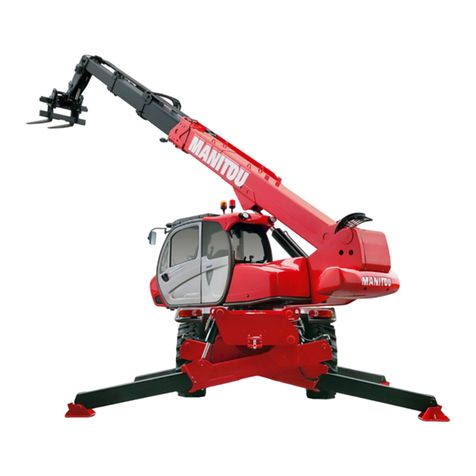1 - 4
1 - OPERATING AND SAFETY INSTRUCTIONS
INSTRUCTIONS TO THE COMPANY MANAGER
1-6
THE SITE 1-6
THE OPERATOR 1-6
THE TELEHANDLER 1-6
A - THE TELEHANDLER'S SUITABILITY FOR THE JOB � � � � � � � � � � � � � � � � � � � � � � � � � � � � � � � � � � � � � � � 1-6
B - ADAPTATION OF THE TELEHANDLER TO STANDARD ENVIRONMENTAL CONDITIONS� � � � � � � � � � � � � � � � 1-6
C - MODIFICATION OF THE TELEHANDLER � � � � � � � � � � � � � � � � � � � � � � � � � � � � � � � � � � � � � � � � � � � � � 1-7
D - FRENCH ROAD TRAFFIC RULES� � � � � � � � � � � � � � � � � � � � � � � � � � � � � � � � � � � � � � � � � � � � � � � � � � 1-7
E - TELEHANDLER CAB PROTECTION � � � � � � � � � � � � � � � � � � � � � � � � � � � � � � � � � � � � � � � � � � � � � � � � 1-7
INSTRUCTIONS 1-8
MAINTENANCE 1-8
INSTRUCTIONS FOR THE OPERATOR
1-9
PREAMBLE 1-9
GENERAL INSTRUCTIONS 1-9
A - OPERATING MANUAL � � � � � � � � � � � � � � � � � � � � � � � � � � � � � � � � � � � � � � � � � � � � � � � � � � � � � � � � 1-9
B - AUTHORISATION FOR USE IN FRANCE � � � � � � � � � � � � � � � � � � � � � � � � � � � � � � � � � � � � � � � � � � � � � 1-9
C - MAINTENANCE � � � � � � � � � � � � � � � � � � � � � � � � � � � � � � � � � � � � � � � � � � � � � � � � � � � � � � � � � � � � 1-9
D - MODIFICATION OF THE TELEHANDLER� � � � � � � � � � � � � � � � � � � � � � � � � � � � � � � � � � � � � � � � � � � � � 1-9
E - LIFTING PEOPLE � � � � � � � � � � � � � � � � � � � � � � � � � � � � � � � � � � � � � � � � � � � � � � � � � � � � � � � � � � 1-10
OPERATING INSTRUCTIONS UNLADEN AND LADEN 1-10
A - BEFORE STARTING THE TELEHANDLER � � � � � � � � � � � � � � � � � � � � � � � � � � � � � � � � � � � � � � � � � � � � 1-10
B - DRIVER'S OPERATING INSTRUCTIONS � � � � � � � � � � � � � � � � � � � � � � � � � � � � � � � � � � � � � � � � � � � � � 1-10
C - ENVIRONMENT � � � � � � � � � � � � � � � � � � � � � � � � � � � � � � � � � � � � � � � � � � � � � � � � � � � � � � � � � � � 1-10
D - VISIBILITY � � � � � � � � � � � � � � � � � � � � � � � � � � � � � � � � � � � � � � � � � � � � � � � � � � � � � � � � � � � � � � 1-11
E - STARTING THE TELEHANDLER� � � � � � � � � � � � � � � � � � � � � � � � � � � � � � � � � � � � � � � � � � � � � � � � � � 1-12
F - DRIVING THE TELEHANDLER� � � � � � � � � � � � � � � � � � � � � � � � � � � � � � � � � � � � � � � � � � � � � � � � � � � 1-12
G - STOPPING THE TELEHANDLER � � � � � � � � � � � � � � � � � � � � � � � � � � � � � � � � � � � � � � � � � � � � � � � � � 1-13
H - DRIVING THE TELEHANDLER ON THE PUBLIC HIGHWAY � � � � � � � � � � � � � � � � � � � � � � � � � � � � � � � � � 1-14
INSTRUCTIONS FOR HANDLING A LOAD: 1-15
A - CHOICE OF ATTACHMENTS � � � � � � � � � � � � � � � � � � � � � � � � � � � � � � � � � � � � � � � � � � � � � � � � � � � 1-15
B - WEIGHT OF LOAD AND CENTRE OF GRAVITY � � � � � � � � � � � � � � � � � � � � � � � � � � � � � � � � � � � � � � � � 1-15
C - LONGITUDINAL STABILITY LIMITER AND WARNING DEVICE � � � � � � � � � � � � � � � � � � � � � � � � � � � � � � � 1-15
D - TRANSVERSE ATTITUDE OF THE TELEHANDLER � � � � � � � � � � � � � � � � � � � � � � � � � � � � � � � � � � � � � � 1-16
E - TAKING UP A LOAD ON THE GROUND� � � � � � � � � � � � � � � � � � � � � � � � � � � � � � � � � � � � � � � � � � � � � 1-16
F - TAKING UP AND SETTING DOWN A HIGH LOAD ON TIRES � � � � � � � � � � � � � � � � � � � � � � � � � � � � � � � � 1-17
H - TAKING UP AND LAYING DOWN A SUSPENDED LOAD � � � � � � � � � � � � � � � � � � � � � � � � � � � � � � � � � � 1-19
I - TRAVELLING WITH A SUSPENDED LOAD� � � � � � � � � � � � � � � � � � � � � � � � � � � � � � � � � � � � � � � � � � � � 1-19
INSTRUCTIONS FOR USING AS A LOADER 1-20
A - LOADING� � � � � � � � � � � � � � � � � � � � � � � � � � � � � � � � � � � � � � � � � � � � � � � � � � � � � � � � � � � � � � � 1-20
B - BACKFILLING � � � � � � � � � � � � � � � � � � � � � � � � � � � � � � � � � � � � � � � � � � � � � � � � � � � � � � � � � � � � 1-21
PLATFORM OPERATING INSTRUCTIONS 1-22
A - AUTHORISATION FOR USE � � � � � � � � � � � � � � � � � � � � � � � � � � � � � � � � � � � � � � � � � � � � � � � � � � � � 1-22
B - TELEHANDLER SUITABILITY FOR USE � � � � � � � � � � � � � � � � � � � � � � � � � � � � � � � � � � � � � � � � � � � � � 1-22
C - PRECAUTIONS WHEN USING THE PLATFORM � � � � � � � � � � � � � � � � � � � � � � � � � � � � � � � � � � � � � � � � 1-22
D - USING THE PLATFORM � � � � � � � � � � � � � � � � � � � � � � � � � � � � � � � � � � � � � � � � � � � � � � � � � � � � � � 1-22
E - ENVIRONMENT � � � � � � � � � � � � � � � � � � � � � � � � � � � � � � � � � � � � � � � � � � � � � � � � � � � � � � � � � � � 1-22
F - MAINTENANCE � � � � � � � � � � � � � � � � � � � � � � � � � � � � � � � � � � � � � � � � � � � � � � � � � � � � � � � � � � � 1-23

